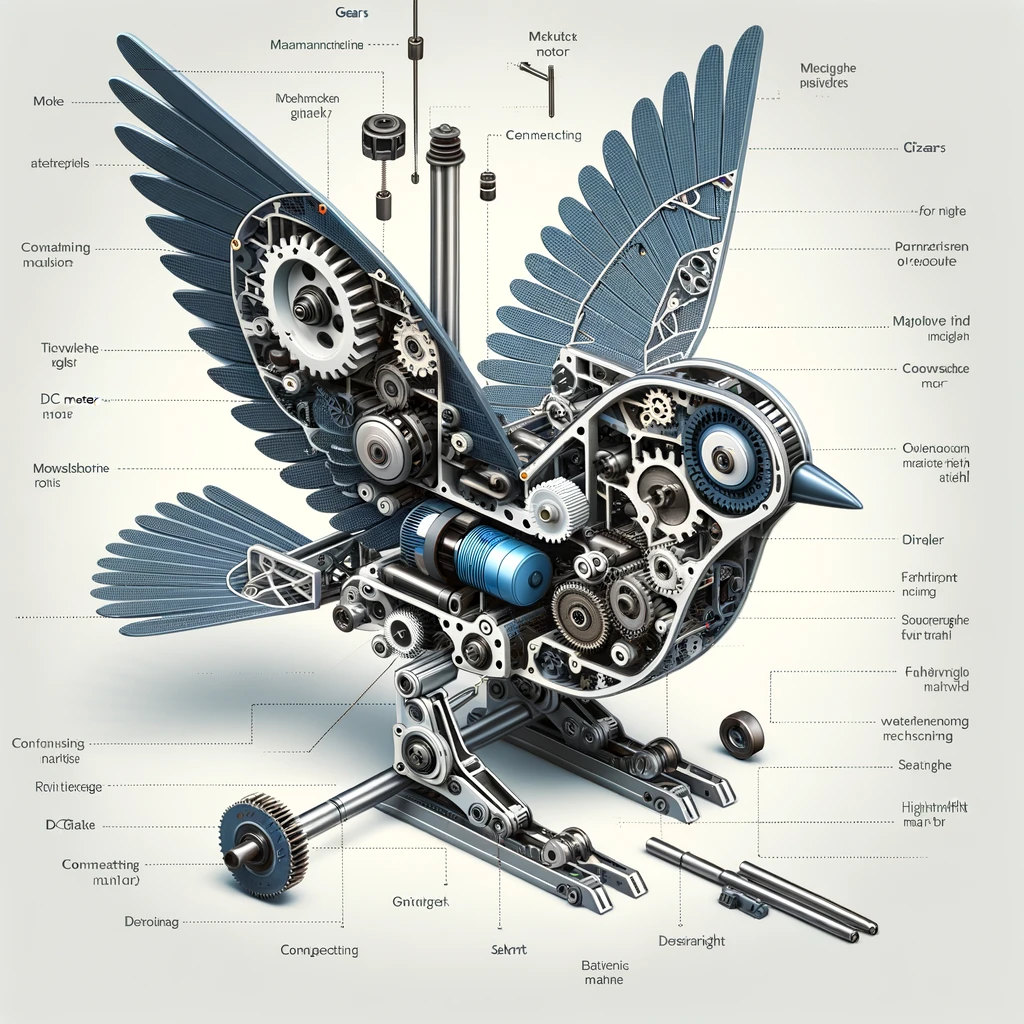
Mechanical Bird Flapping Mechanism Project
Introduction
The mechanical bird flapping mechanism is a fascinating study in biomimicry, attempting to replicate the natural flight of birds through engineering and technology. Known as an ornithopter, these mechanisms are designed to mimic the flapping motion of birds’ wings to achieve flight. The challenge lies in creating a lightweight yet robust system that provides symmetric wing motion for stable flight.

Understanding the Flapping Mechanism
The primary goal of a flapping mechanism is to transform the motor’s rotary motion into the reciprocating motion needed for wing flaps. While there are various methods to achieve this, the most common and effective is the four-bar linkage system. It consists of a rotating crankshaft driven by a motor, with connecting rods that convert the circular motion into the up-and-down movement of wings.
Challenges in Symmetry and Solutions
Achieving symmetrical wing motion is vital for straight and efficient flight. However, traditional dual-wing mechanisms tend to produce asymmetric flapping. To overcome this, engineers have devised several improvements:
- Staggered Crank: Adjusts the timing of wing flaps to synchronize motion.
- Outboard Wing Hinge: Separates the wing hinge from the body for more controlled flapping.
- Dual Cranks: Utilizes two cranks to ensure synchronous motion of both wings.
- Transverse Shaft: Incorporates an additional shaft to balance the flapping on both sides.
Components of a Mechanical Bird
- Gears: Translate and amplify motor power into the necessary motion.
- DC Motor: Provides the power source for wing flapping.
- Connecting Rods and Shafts: Act as the skeleton of the wings, translating motion.
- Frame: The structure that holds all components together, typically made from lightweight materials for optimal flight.

Advantages of Mechanical Birds
- Research and Education: Provides insights into avian flight and aerodynamics.
- Surveillance and Recreation: Potential uses in discreet operations or as flying models for hobbyists.
- Environmental Monitoring: Can be used to access remote areas without disturbing wildlife.
Conclusion
The Mechanical Bird Flapping Mechanism, or ornithopter, represents a blend of nature’s design and human ingenuity. As technology advances, these models become more sophisticated, offering deeper insights into flight mechanics and opening new possibilities for their application in various fields.
In order to download the PDF, You must follow on Youtube. Once done, Click on Submit
Follow On YoutubeSubscribed? Click on Confirm
Download Mechanical Bird Flapping Mechanism Project PDF






